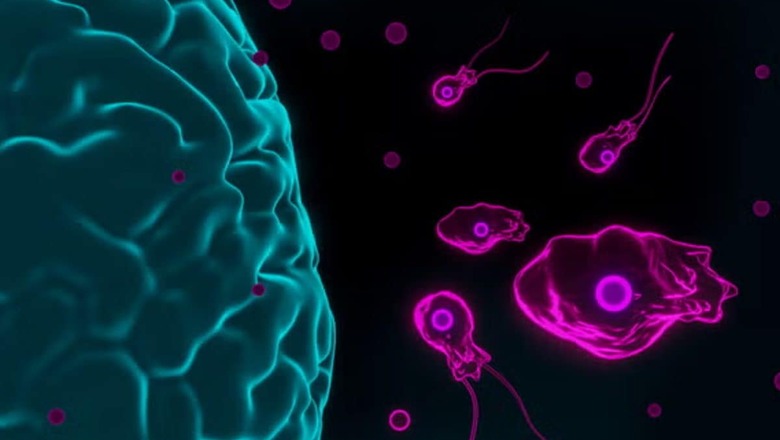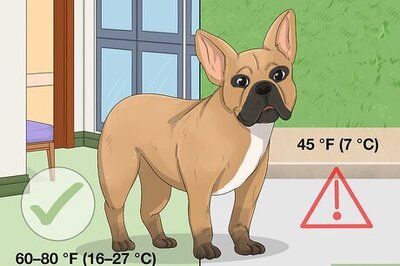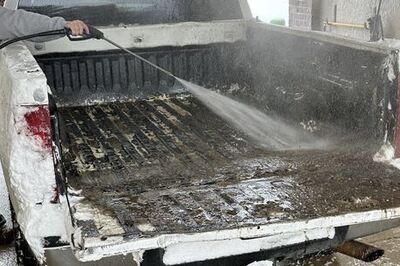
views
A 15-year-old boy from Kerala’s Alappuzha district passed away from a rare infection brought on by the ‘brain-eating amoeba’ Naegleria fowleri after a week of high fever and rapid decline in his vital signs. The amoeba most likely came from him taking a bath in a nearby stream. It is known to thrive in any natural setting, but especially in warm water habitats. It isn’t found in sea water because it can’t survive in salty environments. It feeds on bacteria found in the silt of rivers and lakes to survive.
What is Naegleria fowleri?
A single-cell organism called Naegleria fowleri, also referred to as a brain-eating amoeba, can be found in warm freshwater environments including lakes, hot springs, and even improperly managed swimming pools. Only a microscope can see it since it is so tiny. Naegleria fowleri is the only species of Naegleria that can infect humans. Naegleria fowleri has occasionally been discovered in unclean or inadequately chlorinated swimming pools, splash pads, surf parks, or other recreational areas.
Primary amebic meningoencephalitis (PAM), a serious and frequently fatal brain illness, is brought on by an amoeba that enters the body through the nose and moves to the brain. Although the amoeba is susceptible during its maturing or trophozoite phase, it becomes more tolerant of its surroundings when it is a cyst. Temperatures over 46 degrees Celsius are ideal for its growth. Although refrigeration quickly kills trophozoites, cysts can withstand extremely cold temperatures.
A conducive environment for the amoeba’s growth is created by warm water temperatures, especially in the summer. Exposure risk is increased by unkempt swimming pools or contaminated water sources. Water can be forced up the nose during activities like diving or jumping into warm freshwater lakes, creating an access route for the amoeba.
What Signs and Symptoms Point to a Naegleria Infection?
PAM, a brain infection that damages brain tissue, is brought on by Naegleria fowleri. Early PAM signs and symptoms could resemble those of bacterial meningitis.
- PAM’s initial symptoms might appear anywhere between 1 and 12 days after infection, but they typically appear around 5 days later.
- Headache, fever, nausea, and/or vomiting are possible symptoms. Seizures, hallucinations, seizures, stiff neck, confusion, and coma are some of the most severe symptoms that can develop later.
- When symptoms first appear, the illness advances quickly and usually results in death within 5 days (although it can take anywhere between 1 and 18 days).
Does Naegleria Fowleri Infection Have an Effective Treatment?
Effective therapies have been difficult to find because PAM is so uncommon and because the virus spreads so quickly. Although there is some evidence that some medications may work, we are still discovering which medications work best to treat these illnesses. Currently, an amalgam of medications is used to treat PAM. These medications frequently include amphotericin B, azithromycin, fluconazole, rifampin, miltefosine, and dexamethasone. Because they have been used to treat patients who survived, these medications are believed to be effective against Naegleria fowleri. The most recent of these medicines is meltefosine.
How Can Naegleria Fowleri Infection Be Prevented?
When water containing the ameba enters the body through the nose, it causes people to become ill with Naegleria fowleri. The majority of infections occur when people swim, dive, or submerge their heads in warm freshwater environments like lakes and rivers. Rarely, illnesses have been observed when people rinse their sinuses (nose) with polluted tap water or clean their nostrils during religious rituals. Water systems, particularly those with treated public drinking water systems, hot water heaters, and pipes can all support the growth of Naegleria fowleri.
Preventing water from flowing up the nose should be the primary goal of personal precautions taken to lower the risk of Naegleria fowleri infection.
















Comments
0 comment